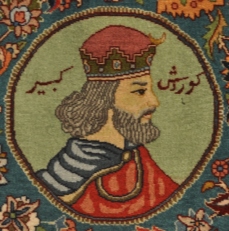A newly discovered Yasna manuscript from Yazd, Iran

The newly discovered Avestan manuscript contains an illuminated Yasna ceremony and belongs to the Dinyār family in Yazd, Iran. Prof. Alberto Cantera has already confirmed that the new manuscript is a Yasna manuscript. The only other known Yasna manuscript of a comparable age is kept at the British Library.
Even though the manuscript has no colophon, according to Alberto Cantera it is most probably by the hand of Mihrabān Anōšīrwān Wahromšāh and should be dated around 1630. The scribe’s hand as well as the illuminations also show a close relation to the Vīdēvdād Sāde of the same scribe, dated to 1647 CE / 1016 Y, kept today in the British Library.
This manuscript is discovered and purchased by Vahid Zolfaghari and is now kept in his private collection. Prof. Alberto Cantera and his team at the Avestan Digital Archive (ADA) project seek to publish and make the manuscript available publicly.
Yasna manuscripts contain the long liturgical text recited during the daily performance of the Yasna, the central ritual in Zoroastrianism. It was originally composed in the ancient Iranian language of Avestan between the 2nd and 1st millennia BCE. Different types of Yasna manuscripts are available, those transmitted with the Pahlavi translation (i.e. Pahlavi-Yasna), those without a translation (i.e. Yasna Sāde) and those with the Sankrit translation (i.e. Sanskrit Yasna). Among the manuscripts of the Pahlavi-Yasna one can distinguish two lines of transmission, namly the Indian Pahlavi-Yasna and the Iranian Pahlavi-Yasna.
 Mozaffari, Ali. 2014.
Mozaffari, Ali. 2014.  Ahmadi, Amir. 2015.
Ahmadi, Amir. 2015. 
 Mozaffari, Ali (ed). 2014.
Mozaffari, Ali (ed). 2014.  Call for Applications
Call for Applications
 Stoneman, Richard. 2015.
Stoneman, Richard. 2015.  Donaldson, Bess. 2015.
Donaldson, Bess. 2015.  Hassandust, Mohammad. 2015. The etymological dictionary of Persian. 5 Vols. Tehran: Academy of Persian Language and Literature.
Hassandust, Mohammad. 2015. The etymological dictionary of Persian. 5 Vols. Tehran: Academy of Persian Language and Literature.